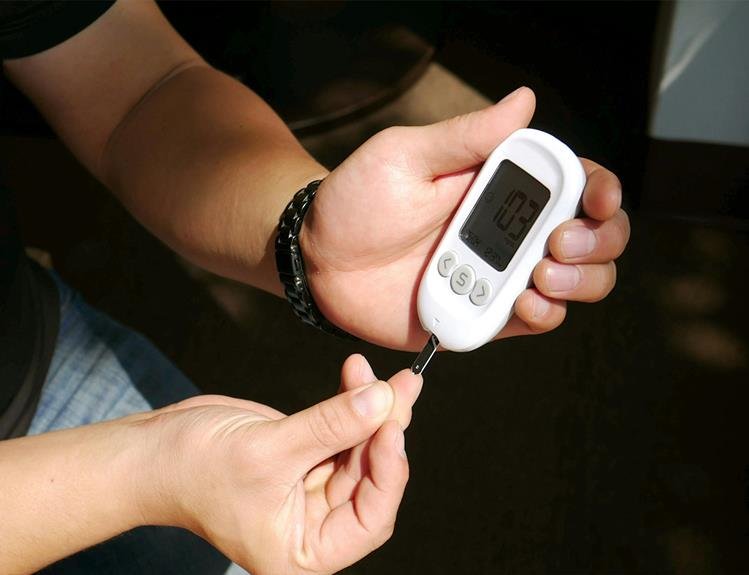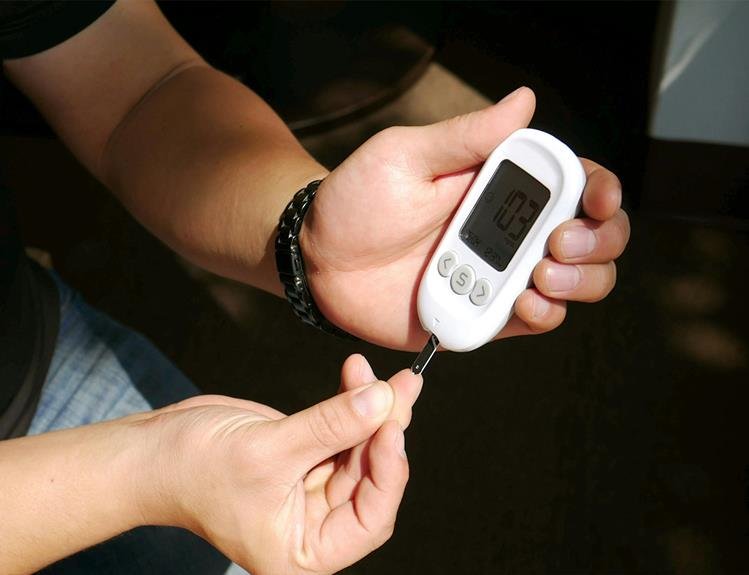The Alarming Link Between Diabetes and Amputation: What You Need to Know
Have you ever considered the potential connection between diabetes and amputation?
The implications of this association are indeed concerning, and understanding the intricacies of this relationship is crucial for your health.
By exploring the factors that contribute to this alarming link, you can equip yourself with the knowledge needed to make informed decisions regarding your well-being.
Stay tuned to uncover essential insights into this critical issue and discover practical steps to safeguard yourself against such risks.
Diabetes and Amputation: A Troubling Connection
If you have diabetes, the troubling connection between diabetes and amputation is something you need to be aware of. Diabetes can lead to serious complications such as nerve damage and poor circulation, particularly in the feet and legs. These complications increase the risk of developing foot ulcers, infections, and ultimately, the need for amputation.
One of the main reasons why diabetes can result in amputations is peripheral artery disease (PAD). PAD occurs when blood vessels in the legs are narrowed or blocked by fatty deposits, reducing blood flow to the extremities. In diabetic individuals, high levels of glucose in the blood can further damage the blood vessels, exacerbating the issue. This diminished blood flow impairs the body's ability to heal wounds, making diabetic individuals more susceptible to infections that can lead to amputation.
Regular foot exams, proper foot care, managing blood sugar levels, and adopting a healthy lifestyle can help reduce the risk of amputation for individuals with diabetes. It's crucial to stay vigilant and proactive in managing your diabetes to protect yourself from this serious complication.
Understanding the Risk Factors
Understanding the risk factors associated with diabetes and amputation is essential for effectively managing your condition and preventing serious complications. One of the primary risk factors is uncontrolled blood sugar levels. High blood sugar damages nerves and blood vessels, increasing the likelihood of foot ulcers that may lead to amputation if left untreated.
Additionally, individuals with diabetes who smoke are at a higher risk of developing complications that could ultimately result in amputation. Poor circulation, a common complication of diabetes, can further exacerbate the risk of amputation by impairing wound healing. It's crucial to monitor your blood sugar levels regularly, maintain a healthy lifestyle, and refrain from smoking to reduce these risks.
Furthermore, individuals with a history of foot problems or previous amputations are at an increased risk and should be extra vigilant in caring for their feet. By understanding and addressing these risk factors, you can take proactive steps to protect yourself from the severe consequences of diabetes-related amputations.
Recognizing Early Warning Signs
To effectively prevent diabetes-related amputations, recognizing early warning signs is crucial for timely intervention and treatment. Pay close attention to your feet for any signs of trouble. Look out for cuts, sores, blisters, or redness that don't heal promptly.
Numbness or tingling in the feet, changes in skin color or temperature, and thickening of the toenails can also indicate potential issues. If you experience persistent pain, swelling, or a foul odor coming from a wound, seek medical attention immediately.
Monitor your feet daily, especially if you have diabetes, to catch any problems early on. Additionally, be mindful of any changes in sensation, such as loss of feeling or sharp pain in your extremities. By recognizing these warning signs early, you can prevent complications that may lead to amputations and ensure proper care to maintain your foot health.
Importance of Regular Foot Exams
Regular foot exams are essential for maintaining optimal foot health, especially for individuals with diabetes. As a diabetic, these exams are crucial because they can help detect potential issues early on, preventing complications such as ulcers and infections that could lead to amputation. By regularly checking your feet, you can catch any problems sooner rather than later.
During these exams, your healthcare provider will assess the circulation, sensation, and overall condition of your feet. They'll look for any signs of redness, cuts, blisters, or calluses that may need attention. Additionally, they can provide guidance on proper foot care techniques and footwear choices that can help prevent injuries.
Preventative Measures for Diabetics
For diabetics, taking proactive steps is crucial in preventing complications that may lead to amputation. Managing blood sugar levels is key. Monitor your blood sugar regularly and follow your healthcare provider's recommendations for medications and insulin.
A healthy diet plays a significant role; focus on consuming a variety of fruits, vegetables, whole grains, and lean proteins while limiting sugary and processed foods. Engage in regular physical activity to improve blood circulation and maintain a healthy weight.
Check your feet daily for any cuts, sores, or blisters, and ensure they're clean and moisturized. Proper foot care includes wearing comfortable shoes that fit well to prevent rubbing and potential injuries. Avoid walking barefoot, especially outdoors.
Quit smoking as it hinders blood flow, increasing the risk of complications. Regular visits to your healthcare provider for foot exams are essential to detect any issues early. By incorporating these preventative measures into your daily routine, you can significantly reduce the risk of diabetic foot complications that may lead to amputation.
Treatment Options for Diabetic Foot Complications
When facing diabetic foot complications, you can explore preventive foot care measures, effective wound management strategies, and various surgical intervention options.
Taking proactive steps to care for your feet, addressing wounds promptly, and considering surgical solutions are key factors in managing diabetic foot complications effectively.
Preventive Foot Care
Ensuring proper foot care is essential in managing and preventing complications associated with diabetes, particularly those affecting the feet.
As a person with diabetes, you must inspect your feet daily for any cuts, sores, or blisters. Keep your feet clean and dry, making sure to moisturize but avoid applying lotion between your toes.
Trim your toenails straight across and avoid cutting into the corners to prevent ingrown nails. Always wear comfortable shoes that fit well to avoid rubbing or pressure points that could lead to ulcers.
Regularly visit a podiatrist for professional foot exams and seek immediate medical attention if you notice any signs of infection or slow-healing wounds.
Proper foot care is crucial in preventing serious diabetic foot complications.
Wound Management Strategies
Proper wound management is crucial in addressing and treating diabetic foot complications effectively. For diabetic individuals, prompt attention to wounds is vital to prevent further complications like infections that can lead to amputations.
Begin by gently cleansing the wound with mild soap and water, then apply an appropriate antibiotic ointment before covering it with a sterile dressing. Regularly change the dressing and monitor the wound for any signs of infection such as increased redness, swelling, or discharge.
Keep weight off the affected foot to promote healing and minimize pressure on the wound. If you notice any concerning changes or if the wound doesn't improve, seek medical attention promptly to prevent escalation of the issue.
Surgical Intervention Options
Consider various surgical interventions as viable treatment options for managing diabetic foot complications effectively and preventing potential amputations. When conservative measures like wound care and offloading fail to improve the condition, surgical options become crucial.
Procedures such as debridement, which involves removing infected or dead tissue, can help promote healing and prevent further complications. Additionally, surgical interventions like skin grafts, flap reconstruction, or even partial amputations may be necessary in severe cases to save the limb.
Surgeons may also consider revascularization procedures to improve blood flow to the affected area, aiding in the healing process. By exploring these surgical intervention options, individuals with diabetic foot complications can enhance their chances of successful treatment outcomes and reduce the risk of amputations.
Empowering Yourself Through Knowledge
You can empower yourself by educating yourself on how diabetes can lead to amputations. Knowing the risks and symptoms can help you take preventative measures to save your limbs.
Awareness is key in managing diabetes and protecting your health.
Education for Prevention
Understanding the relationship between diabetes and amputation can significantly empower individuals to make informed decisions about their health. Education plays a crucial role in prevention. By learning about how diabetes affects the body, you can take proactive steps to manage your condition effectively.
Monitoring your blood sugar levels, following a healthy diet, exercising regularly, and attending regular check-ups are key components of diabetes management. Educating yourself about foot care is also vital in preventing complications that could lead to amputation. Knowing the warning signs of foot issues and seeking prompt medical attention can make a significant difference in preserving your limbs.
Stay informed, stay proactive, and prioritize your health to reduce the risk of amputation.
Awareness Saves Limbs
Empower yourself to safeguard your limbs by increasing your awareness of how diabetes can impact your feet and the steps you can take to prevent amputation. Diabetes can cause nerve damage and poor circulation in your feet, increasing the risk of infections and ulcers that may lead to amputation if not managed properly.
Regularly inspect your feet for any cuts, sores, or changes in color or temperature. Keep your feet clean and moisturized, wear comfortable shoes that fit well, and avoid walking barefoot. Maintain healthy blood sugar levels through proper diet, exercise, and medication as prescribed by your healthcare provider.
Frequently Asked Questions
Can Diabetes-Related Amputations Be Prevented Entirely Through Proper Management of the Condition?
You can prevent diabetes-related amputations by effectively managing the condition. Regular monitoring of blood sugar levels, following a healthy diet, staying active, and seeking timely medical care can significantly reduce the risk of amputation.
Are There Specific Lifestyle Changes That Can Help Reduce the Risk of Amputation in Diabetic Individuals?
To reduce the risk of amputation in diabetes, maintain healthy blood sugar levels through diet, exercise, and medication. Regular foot care, avoiding smoking, and routine medical check-ups are crucial. Stay proactive and seek help if any issues arise.
How Common Is It for Diabetic Individuals to Require Multiple Amputations?
It's not uncommon for diabetic individuals to require multiple amputations due to complications. Keeping your blood sugar levels in check, following a healthy diet, staying active, and regular medical check-ups can help reduce this risk.
What Are Some Innovative Treatments or Technologies That Are Being Developed to Improve Outcomes for Diabetic Foot Complications?
You'll be glad to hear that innovative treatments like diabetic foot monitoring systems and advanced wound care therapies are being developed. These technologies aim to enhance outcomes and reduce the risk of amputations.
How Can Family Members and Caregivers Support a Diabetic Individual in Preventing Amputations and Managing Their Condition Effectively?
Support your loved one by encouraging a healthy lifestyle with regular exercise and balanced meals. Attend medical appointments together, help with medication management, and create a safe environment to prevent injuries. Your involvement makes a significant difference.
Conclusion
You now know the alarming link between diabetes and amputation. By understanding the risk factors, recognizing early warning signs, and prioritizing regular foot exams, you can take control of your health.
Remember, knowledge is power – empower yourself to prevent complications and seek treatment early. Don't let diabetes dictate your future – take charge of your health today.




